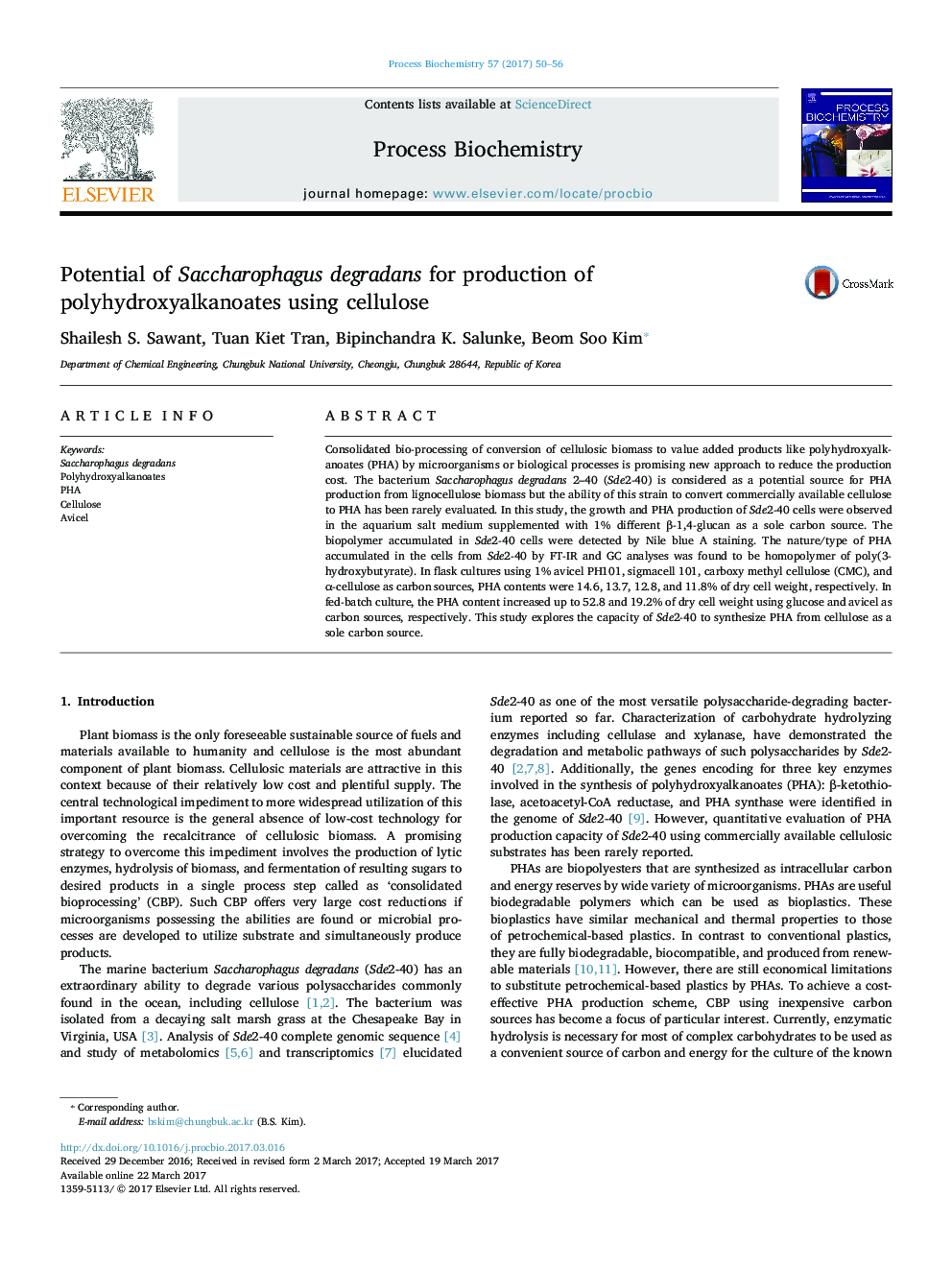| Article ID | Journal | Published Year | Pages | File Type |
|---|---|---|---|---|
| 4755074 | Process Biochemistry | 2017 | 7 Pages |
â¢Consolidated bio-processing of conversion of cellulosic biomass to polyhydroxyalkanoates (PHA).â¢Quantitative determination of PHA contents in Saccharophagus degradans cells from different types of cellulosic substrates.â¢In flask culture, PHA contents of S. degradans cells ranged from 11 to 23% of dry cell weight using various carbon sources.â¢In fed-batch culture in 5 L fermentor, PHA contents increased up to 52.8 and 19.2% of dry cell weight using glucose and avicel, respectively.
Consolidated bio-processing of conversion of cellulosic biomass to value added products like polyhydroxyalkanoates (PHA) by microorganisms or biological processes is promising new approach to reduce the production cost. The bacterium Saccharophagus degradans 2-40 (Sde2-40) is considered as a potential source for PHA production from lignocellulose biomass but the ability of this strain to convert commercially available cellulose to PHA has been rarely evaluated. In this study, the growth and PHA production of Sde2-40 cells were observed in the aquarium salt medium supplemented with 1% different β-1,4-glucan as a sole carbon source. The biopolymer accumulated in Sde2-40 cells were detected by Nile blue A staining. The nature/type of PHA accumulated in the cells from Sde2-40 by FT-IR and GC analyses was found to be homopolymer of poly(3-hydroxybutyrate). In flask cultures using 1% avicel PH101, sigmacell 101, carboxy methyl cellulose (CMC), and α-cellulose as carbon sources, PHA contents were 14.6, 13.7, 12.8, and 11.8% of dry cell weight, respectively. In fed-batch culture, the PHA content increased up to 52.8 and 19.2% of dry cell weight using glucose and avicel as carbon sources, respectively. This study explores the capacity of Sde2-40 to synthesize PHA from cellulose as a sole carbon source.
Graphical abstractDownload high-res image (160KB)Download full-size image
